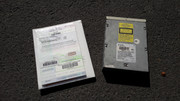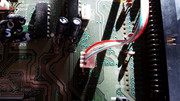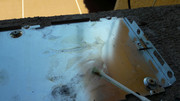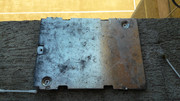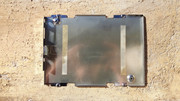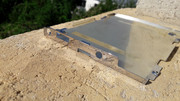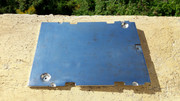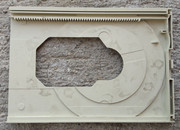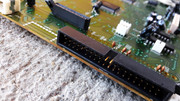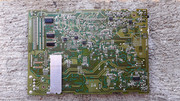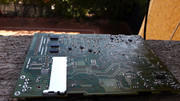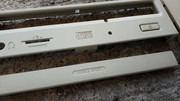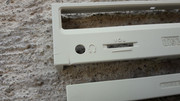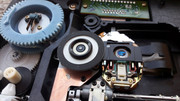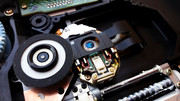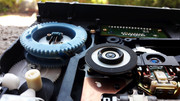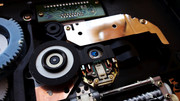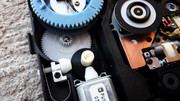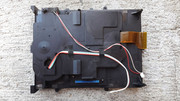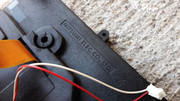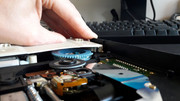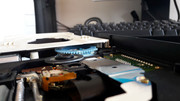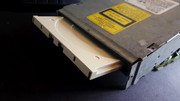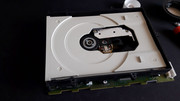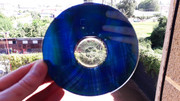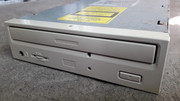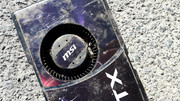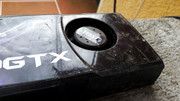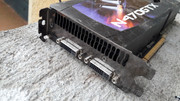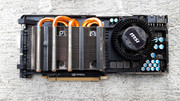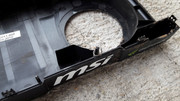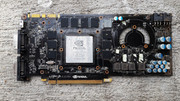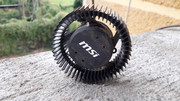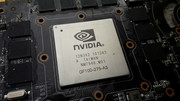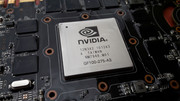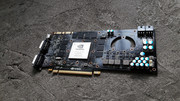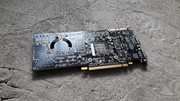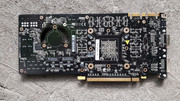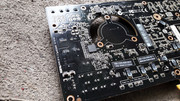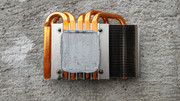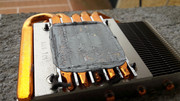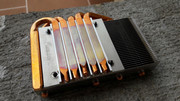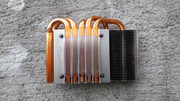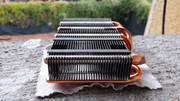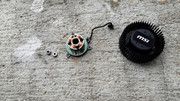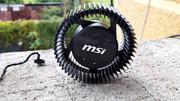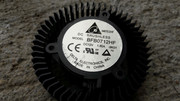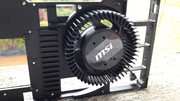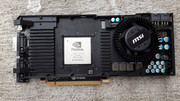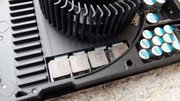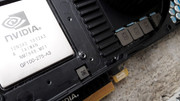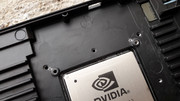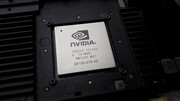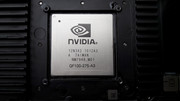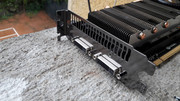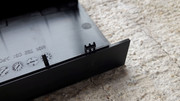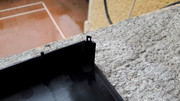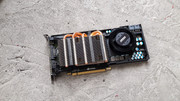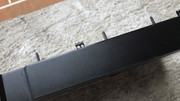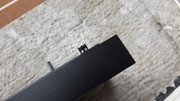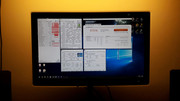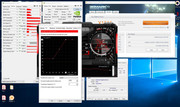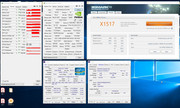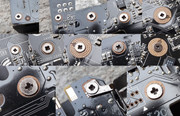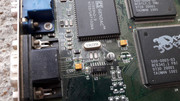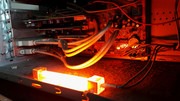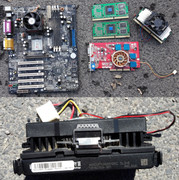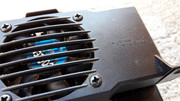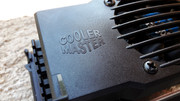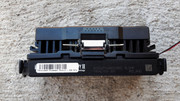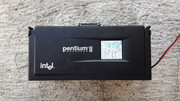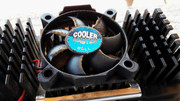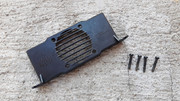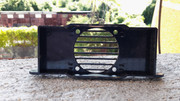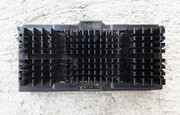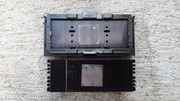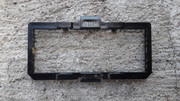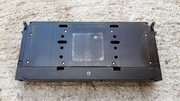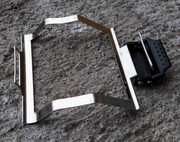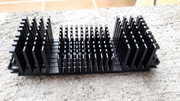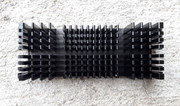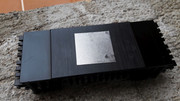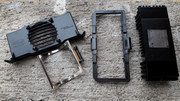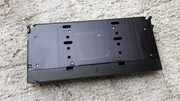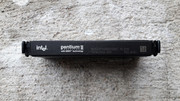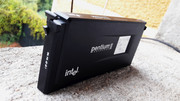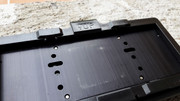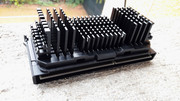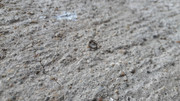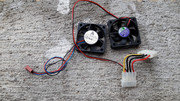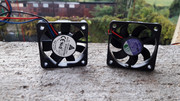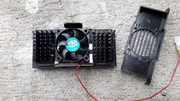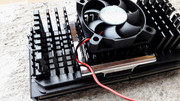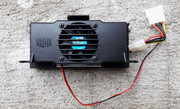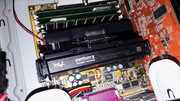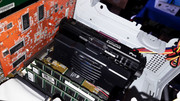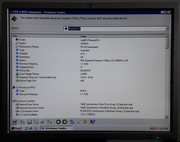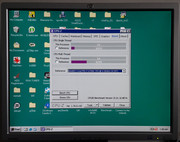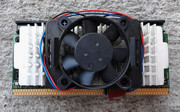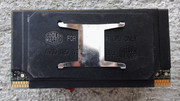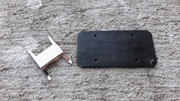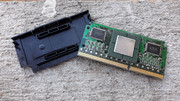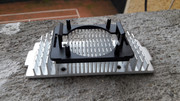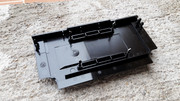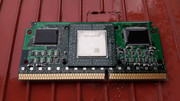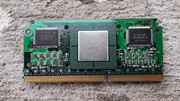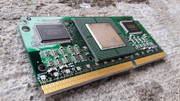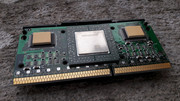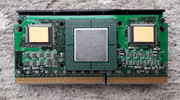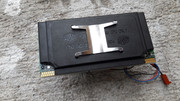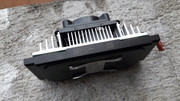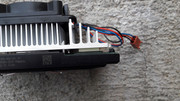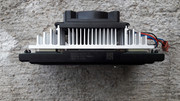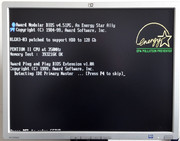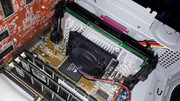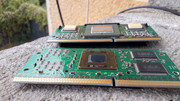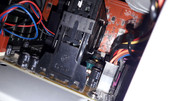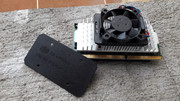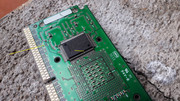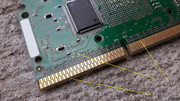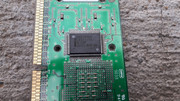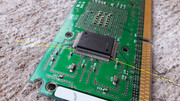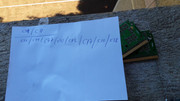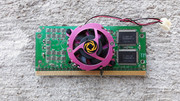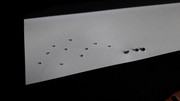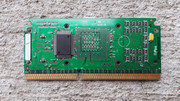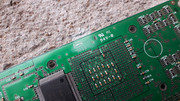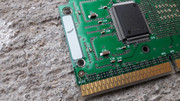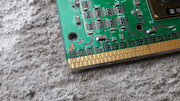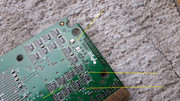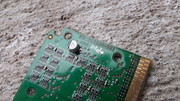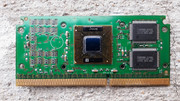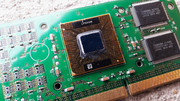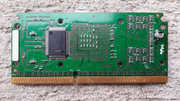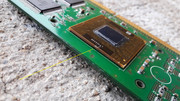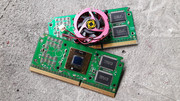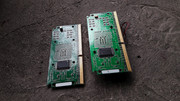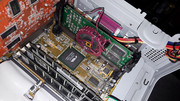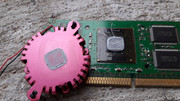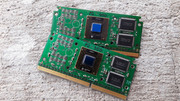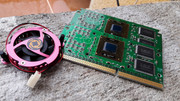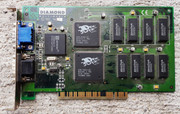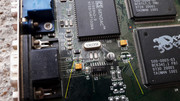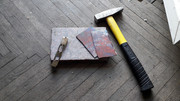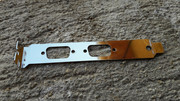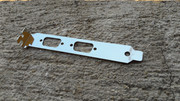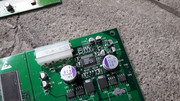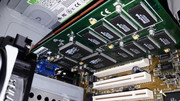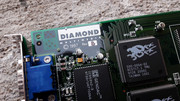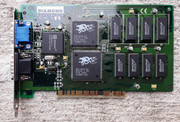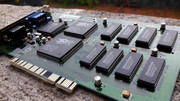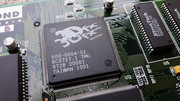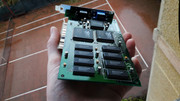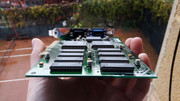Reply 621 of 852, by devius
- Rank
- Oldbie
Nice! 2X CD-ROM drives are a thing of beauty 😄
Reply 622 of 852, by Robert B
- Rank
- Oldbie
MI-mi-MI-mi-MI-(clears throat) MITSUMI!
There is no secret that I absolutely love optical disk drives. Here I'm mainly talking about the old optical units that have a low speed rating. If I would have to give an explanation for this fact then I'll have to say that I think it is because I was optical disk drives deprived when I was little. 😁 You see, back in the day, when the floppy disk was the main way to transfer data between PCs not just about anybody could own a CD-ROM unit. Yep, when I was rocking an 850MB HDD and a CD could hold 650-700MB I really didn't have much reason to smile.
I still remember my first CD-ROM unit, back in '98, an LG CRD-8160B, 16x. Initially I was supposed to receive a Toshiba 12x but I got the LG 16x instead. 16x is way better than 12x I said to myself but what did I know back then ...
The LG 16x proved to be very temperamental. It only read silver disks and any other color put a heavy strain on the poor thing. In spite of this I used the unit for many years. Later I bought my first CD-RW Teac, BTC and ASUS units, but even if my first LG was a dud, I still preferred LG ODDs. I still have my good ol' LG GSA-4163B. That one is bullet proof, except for the rubber belt, that for sure won't last a lifetime. 😁
In todays episode I will present a Mitsumi CRMC-FX001D CD ROM with an incredible 2x speed rating which in the end had its way with me.
Yep, she got the last laugh in the end. Let's see how has this happened.
Double the speed Double the fun?
I found the Mitsumi CD ROM at the local flea market from my city sitting in a dirty cardboard box. Together with some other sisters, it sat with it ass up and only my curiosity made me pick it up and look at its face.
Just by looking at it I already new that it was a Mitsumi unit. The Double Speed string filled in the missing blanks and I knew that I had in my hands a mighty 2x CD-ROM unit.
I looked closely at it and after a thorough inspection I put it back in the box.
Too much hassle I said to myself. I knew that I could make it great again but I just didn't feel like doing it.
The following week I went again at the flea market and my thought went instinctively towards the 2x unit. Unfortunately I couldn't find it.
RIP, old relic of times gone by, I said to myself.
After several weeks I was in for a surprise. The dirty cardboard box appeared again.
BEHOLD! The 2x wonder!
How much is it? 2 EUR? Here you go sir!
On the same day I bought the Mitsumi unit I also bought a sealed copy of Windows 98 or should I say Deuxieme Edition. Not a bad combo IMO.
Even if I had many undergoing projects I decided to restore the Mitsumi unit ASAP!
As a note, no matter what you decide to tear up or restore, always make clear pictures with everything you deem to be of importance. Screws, cables, clips, etc. Even if you are absolutely sure that you will remember everything I must tell you that in most cases than not you will forget a detail and then you will have to search for hours or days for pictures on the Internet or it will take you hours to determine where everything goes back. Been there done that.
Screws or otherwise you'll be screwed.
Count the teeth as you will need it for later.
Remember the orientation.
The disassembly of the unit was in general straight forward, screws, plastic clips.
In the case of this unit to eject the tray you don't need a paper clip but a small screwdriver which fits into the small opening at the front of the unit. You have to rotate the screwdriver in a counter clockwise motion. It will take quite a few revolutions until the laser body is in its down position and only after this the tray will start to open slowly. After the tray is out a few centimeters all it takes to open it fully is a gentle pull.
After the tray was fully opened and I wanted to remove it completely from the unit I had to use "brute force" and push it upwards until the teeth from the side cleared the sprocket inside. (In the case of the newer units this is much easier to do as you only have to deal with some plastic clips.) This is why I had to make good pictures and also count the teeth for the correct position of the tray. The required force to remove the tray isn't great and the whole operation needs finesse. I'll give you more details when present how I put back the tray.
There might be another method to completely remove the tray but I didn't want to fiddle with the sprockets inside or to dismantle the unit further.
The removal of the metal case had to be done with the tray closed as it is held in place by a few plastic hooks placed at the front.
After I took apart the unit I was greeted by an all too familiar view. Yep, rust, glad to see you old friend! ^$#&^##!!!
The mechanism inside was in very good shape.
I removed the paper label that wasn't from factory and I was finally able to see the exact model of the unit.
Rusty rust rust.
To get rid of the rust inside I first tried cotton sticks and a rust removal solution but the results where kind of meh. I was successful in my attempt to remove the rust but I was left with discolored areas. This was to be expected but I needed something better as I wasn't going to let the metal looking like this.
After a short deliberation and an initial test I decided to polish the metal with a felt wheel and polishing compound. I didn't want to take this operation to the extreme and I didn't want to repair all the dings and the small imperfections. They give the unit character.
The results of the polishing stage were above my expectations.
Rust be gone!
To remove the rust from the plastic surfaces I first used a rust removal solution but this didn't yield good results.
In the end I used polishing paste, soft rags and cotton sticks. In the past, to clean the plastic surfaces I used CIF cream but the use of polishing paste was better as the results were quicker and the plastics looked better. I didn't overdo the polishing stage and I didn't use too much pressure when I polished the plastics. When I saw that the dirt was gone and the rust vanished I stopped. Afterwards I washed the parts with water and Fairy dish soap and then it was a case of drying time.
The insides were pretty clean considering the age and the origin of the unit.
Always check all the connectors for stuff like this. Pins that aren't supposed to be touching are always a bad thing.
Ever since I first laid my eyes on the PCB I was amused by the way the capacitors looked. It was as if a hurricane came and it put them down. Their position isn't random. If they were to sit upright they just wouldn't fit under the mechanism. Funny fact.
The PCB was cleaned well. It came out shining.
After "the mechanical peeling" stage the plastics came out looking nice. Some deep scratches have been left as they were. There are methods to eliminate them but I didn't want to do this.
While I was cleaning the insides of the unit I was surprised to find something interesting. After I removed a metal cover from the laser assembly I was greeted by a 26 years old fingerprint from the one that assembled the unit. 😁 For that extra effect, I decided to polish the outside of the cover and leave the fingerprint intact.
The insides of the unit were cleaned well. I cleaned the laser lens by gently touching it with a microfiber cloth dipped in IPA 99%.
No rubber belt. In the picture you can clearly see why a small screwdriver is needed when you want to eject the tray when the unit is unpowered. The screwdriver engages the small metal strip by the hole in the front. A gentle push compresses the tiny spring and the plastic cone engages the rubber wheel. The turning of the screwdriver in a counter clockwise motion ejects the tray.
Looking sharp!
After I used some silicone grease on some of the metal parts and sprockets I was ready to put everything back as it was. I must say that the original grease was still good and a great part of it was redistributed where it was needed. If something is still good why not use it?
Inserting the tray was the exact opposite of the removal procedure. I know it sounds cheesy but it is as I said. In the picture you can clearly see how I had to deform the plastic a little to clear the teeth from the sprocket. 4 teeth was the exact number. Remember to always check the number of teeth as there can be difference between units. Don't use excessive force. Common sense is the name of the game. To make it easier you can use a marker to pinpoint the correct position.
Silicone grease. I used cotton sticks to spread the silicone grease in a thin and uniform layer. Too much is not recommended.
Some assemblies required! 😁
As I said before you cannot assemble or disassemble the unit with the tray ejected. At least not without damaging something.
As good as new.
Ever since I bought my first flea market ODD I wanted to find a CD inside. Well, eventually I got my wish, but what I found inside isn't something worth talking about. I was hoping for something better but this is just a time capsule.
My job is completed! My latest and greatest project is done!
When the unit was done I was anxious to test it but something caught my attention. No SLAVE/MASTER/CABLE SELECT jumper? 40 pins interfaces aren't always the same!
Wait a minute! This isn't an IDE/ATAPI unit! Damn! I need a proprietary card with a Mitsumi interface! Damn it!
A quick FCC ID search EW4CRMC-FX001D confirmed my suspicion. https://fccid.io/EW4CRMC-FX001D Internal CD-ROM Drive * A CD-ROM interface card must be supplied with each unit.
I searched in all of my boxes for a soundcard with a Mitsumi interface but I didn't find one. Bummer. That sux!
Besides a soundcard or an add-on card with a Mitsumi interface the correct drivers are also required. I had the same problem when I restored a Creative CR-563-B 2x unit and the whole operation took some work. In the end the Creative unit was unusable as the laser was quite tired. Or should I say dead tired. 😁
All I could do was to power up the Mitsumi ODD and see if it would try to read a disk. The sounds it made and its behaviour led me to believe that it is still in good working condition. Until proven contrary I consider this unit @ 100%.
Even if the Mitsumi units are looked upon like a Cinderella of the ODDs, I was impressed by the construction, the attention to detail, the Nichicon capacitors, the ICs Made In Japan. All in all it is a solid unit.
As they say, who laughs last laughs best and for now it seems that the Mitsumi laughed last but don't fret as I'm pretty sure that we haven't reached the end of this story. I sense a rematch some time down the road, days, weeks, years, who cares, I always finish what I start! 😁
gallery: https://postimg.cc/gallery/K2GtJ29
More later.
Reply 623 of 852, by peido
- Rank
- Member
Now I'm starting to have the urge to start buying old CD-ROM drives 😁
Nice restoration.
Reply 624 of 852, by Robert B
- Rank
- Oldbie
Thanks peido. 😀
Me too. Just last weekend I almost bought another Mitsumi CRMC-FX001D CD ROM but it was missing the tray face plate, plus another 8x and 2x CD-ROM units but I said I need to chill and I took a cold shower. So NO PURCHASE FOR ME!!! 😁
Next episode will feature something newer but I applied the same principles I always do. ALL IN or ALL OUT!!! 😁
After so many ATI 9800 casualties I said I need some GREEN in my life and guess what, this GTX 470 fit the bill nicely. I had to chose from an ATI 6870 and this puppy. NO BRAINER! 😁
More later.
Reply 625 of 852, by texterted
- Rank
- Member
Excellent CD resto and looking forwards to the next!
Cheers
Ted
98se/W2K :- Asus A8v Dlx. A-64 3500+, 512 mb ddr, Radeon 9800 Pro, SB Live.
XP Pro:- Asus P5 Q SE Plus, C2D E8400, 4 Gig DDR2, Radeon HD4870, SB Audigy 2ZS.
Reply 626 of 852, by bjwil1991
- Rank
- l33t
Last old CD-ROM I bought and repaired is a Creative Labs CR-563-B Double-Speed drive that had a laser head motor issue. Oiled it and put some white lithium grease on the rails and tracks, put it back together, and it started to work, except the grinding noise when it's moving back and forth, which indicates the gears aren't catching exactly. But it reads CDs without issues, except multi session didn't exist until ATAPI IDE CD-ROM drives became the norm in the 1990's.
Discord: https://discord.gg/U5dJw7x
Systems from the Compaq Portable 1 to Ryzen 9 5950X
Twitch: https://twitch.tv/retropcuser
Reply 627 of 852, by PcBytes
- Rank
- l33t
That laser looks strikingly similar to the classic PS1/PSone lasers.
"Enter at your own peril, past the bolted door..."
Main PC: i5 3470, GB B75M-D3H, 16GB RAM, 2x1TB
98SE : P3 650, Soyo SY-6BA+IV, 384MB RAM, 80GB
Reply 628 of 852, by Robert B
- Rank
- Oldbie
After so much "red meat" aka 2x dead ATI 9800 PRO cards, I was in dire need of something "green". You can eat meat all day long but you also need some fruits and vegetables, the green stuff. Besides, the three dead ATI 9800 PRO from my collection that went Beyond the Dark Portal meant that I wasn't in the mood to buy such cards from the flea market any time soon.
Knowing all to well that "my luck" with ATI 9800 cards is something that doesn't need mentioning and to underline the fact that I feel when "the green cards" are still alive and kicking, I was ready to put to the test what I already knew. I have a knack for nVIDIA cards. Even to this day I still feel ATI cards as something alien. Don't get me wrong, I have nothing against ATI cards it's just that I'm so used to nVIDIA cards that practically I don't want to change this. At least for the foreseeable future. Who knows what lies ahead? This might change over time but from where I'm sitting it doesn't look like it will. So, I'll stick with what I know is best for me.
To spice things up, I decided to look into "my dumpster" aka my eternal hunting ground, the local flea market, for a suitable candidate that will be able to endure the treatment that will receive and also to demonstrate, if it was still needed, "my theory".
As fate made it, at the end of September I found what I needed. Where? At the flea market of course.
Given a choice between a VTX ATI Radeon HD 6870 and a nVIDIA GTX 470 it was crystal clear what I was going to choose.
nVIDIA !
Usually I don't buy PCI-E cards from the flea market but when I saw this massive brick I couldn't resist asking how much it was. The initial asking price was dirt cheap but that didn't stop me from negotiating. You see, flea market rules state that if you don't negotiate you were prepared to pay more for something. This will be remembered next time when you go there and as I go there on a weekly basis I must do what must be done. 😁
After a short haggling session I paid little above 2 EUROS for the card and it was mine. For such a price I was ready to bite the bullet. I'm sure that many of you would've done the same.
Meet the MSI N470GTX 1.2GB 320bit GDDR5 N470GTX-M2D12 !
Looking sorry for itself!
The card was full of scratches, mud, dust and the cherry on top a wood screw and a shard of glass stuck in the fan! 😁
After a first scan I didn't find any missing components on the back of card.
I could feel the "energon" pouring from the card. I'm so happy that you saved me from the crusher said the BRICK! 😁
Let's see if this thing will really fly!
Didn't I forget something? AaaaAAA the wood screw and the shard of glass where swiftly removed on the spot. First things always come FIRST!
Yep, the scratches aren't going anywhere. I could remove the stickers but much of the identity of the card will be lost in the process so they are here to stay.
Nothing to worry about. A bent bracket? Child's play!
Naked! Show me everything!
This is my first GTX 470 that I had to work with. Back in the day I had a MSI N460GTX Hawk Twin Frozr II as I couldn't afford something better. After the Hawk, in 2011 I got an awesome MSI GTX 580. I will remember that GTX 580 my entire life. TRUE UNALTERED HIGH END! I can still feel the tingles I got when I opened up the box. Better than anything! I will present the card later aka waaaayy later. I'm waiting for it to age like a fine wine.
But I digress.
To remove the plastic shroud / cover from the GTX 470 I had to disengage a few plastic hooks. Needless to say that a couple of them broke off. Flimsy bits of plastic.
What I wasn't expecting to find were a couple of springs that keep the cover under tension when the plastic hooks are engaged. Nice touch! No rattling under pressure.
Dried up TIM. Yep. I worked with Pentium II CPUs that had 20 years old TIM and that was still soft. 10 years old TIM is now dried up. Nice.
The fan was in dire need of a cleaning.
New thermal pads needed! Damn, this card is sooooo neeeeeedyyyy!!! I want this and I want that, give me your credit card and PIN number, give me everything! 😁
I soooo like it when water comes in contact with electronic artifacts! Let's not forget the MUD! It is good for the skin.
A mighty GF100 heart is under that armor.
IPA 99.9%!!!
WORK IT BABY!!!
After some work the results were quick to follow. Even so, something still bothered me. After many functioning hours, the PCB shows some marks that I will never be able to remove. The fact that these cards run hot or the choice made in regard to the materials used in their production, means that whatever I would do they will never look better than new.
Well, let's carry on shall we?
While I cleaned the PCB I found out that my initial inspection wasn't a thorough one. Three tiny components were missing. Two ceramic capacitors and one resistor. My choice, to settle on the nVIDIA card started to look a little uninspired. Still, I carried on like nothing happened. My gut is always right! (or something along this line)
Fixed.
I cleaned the heatsink well. It was washed with water under pressure and quickly dried using an air compressor.
The fan was thoroughly cleaned. Fully dismantled, a tiny drop of oil and precise cleaning.
Looking good!
By eye I judged that the original thermald pads have a width of 1 mm. I also searched the Internet for information that confirmed my suspicion. One fact was also blatant. A very soft thermal pad with a width of 1 mm isn't the same thing as a thermal pad of 1 mm made from a more rigid material.
I searched through my boxes and all I could find was some Arctic 0.5 mm soft blue thermal pad.
As I wasn't going to buy a 1mm thermal pad just for this card I decided to stack the 0.5 mm and get the 1 mm I needed. Good or bad this was my choice.
I really want to power this puppy up. You better be alive or ELSE!
I could've give more attention to the way the thermal pad look, in the sense that I could've made them perfect but I didn't. I was already feeling the pressure to fire up the card and confirm that it is still alive. Don't worry, the pads don't need to be perfect for them to do their thing. For once my OCD didn't kick in. 😁
I can feel it!
I mentioned above that the Artic blue thermal pad is a little bit harder than the original thermal pads. Even if I didn't test this I am sure that the 0.5 mm width wasn't enough. 1 mm was close to the maximum limit. After I mounted the new thermal pads I had to apply a little bit of pressure on the metal "skeleton" to reduce the small deformation of the PCB that resulted from the use of the Arctic pads. The entire procedure was nerve raking as everyone knows that you don't mess with the tiny solder balls. But I did it regardless. Also I was sure that under the heat resulted from the running of the card, the thermal pads will soften more and all will be ok in the end. They will bed themselves in nicely.
Soon came the moment when I had to attach the heatsink. Here I hit a snag. I had no marks to guide me in regard to the exact placement of the heatsink.
I mean I knew where it was supposed to go but I didn't want to mess up the freshly applied Arctic MX-4 TIM so I placed the heatsink in a position that looked ok and I started to screw it down.
BIG MISTAKE!
I placed the heatsink in the wrong position and I was close to killing the card in the process.
Too close for comfort.
I had to disassemble the card again and clean all the tiny metal shavings. Lots of screws to undone. Thermal pads to arrange. The works.
New Arctic MX-4 TIM. Lots of it. This GPU eats TIM all day long. The heatspreader is huge. The direct touch heatpipe design doesn't help also.
I covered the minor "damage" with fresh black glossy paint and I was ready for another try.
I was such a n00b. 😁
Bracket? FIXED!
NICE! NICE! NICE!
The little bits of plastic that broke off have been glued back with the all mighty superglue. This wasn't such a super choice as they literally jumped into my face when I attached the plastic shroud.
Still naked.
I glued again the bits of plastic using superglue but as a precaution I also strengthened them with transparent POXIPOL. They were boxed in. Try and jump into my face now you little $#^^$#$%^#%$^@&!!!!!
Ready for ACTION SIR!!! All crews reporting!
After all of the troubles the card gave me I looked at it and I said to myself: if it really works it is perfect!
You see, when you want to prove something it is best to leave your doubts for later. If you believe in something go for it. In the end even if you lose you can at least say that you have tried. The taste of success is sweet and it makes you want more and more. So don't give up and try even if the odds are stacked against you.
Between what my gut was telling me and what my brain compiled I just knew that the card was still alive. Call it whatever you want I was sure I had a winner in my hand.
First POST! BAM!
Driver installed.
Flawless.
I was telling you that I never had a GTX 470 back in the day, so I was under the impression that the Thermi will scream like hell and my Bitfenix Colossus will take off when I was about to power it up.
Surprise. The fan was silent and the card was quite well behaved for a blower solution.
After a short investigation I quickly found the answer. The card has a silent fan profile and in full load it goes easily to 90C. Barbecue anyone?
When I saw the temperature of 90C @ 2620 rpm I said to myself that I mounted the heatsink wrong or I didn't apply enough thermal paste but after I set an aggressive fan profile and I got a maximum temperature of 64C @ 4770 rpm in full load after several 3Dmark runs, all of my doubts vanished. One thing I want to mention: YOU DON'T WANT THE FAN @ 4770 rpm! Trust me.
This card is @100%! Sheesh! What a relief!
You got me there! Once a Thermi always a Fermi! 😁
And so I got my share of "greens" after so much meat. IT'S ALIVE!
This card will never be like the day it was born but the fact that I saved from the crusher makes me warm inside.
From the brink of destruction to salvation. From certain death to a new beginning. This card lived to fight another day.
All wasn't just sunshine and rainbows. After several dismantling sessions even if I used the correct screwdriver I saw that many of the screws were already "tired". Call it whatever you want, anti-tampering measure or cost above else, these newer cards aren't built to last. Regardless, I will always buy whatever tickles my fancy.
Believe it or not, only 10 years have passed since the time this card roamed in the wild and it feels like a lifetime ago.
We live fast but we don't stop to ask ourselves if we live better.
FULL SPEED AHEAD!
Cya later with more stuff!
gallery: https://postimg.cc/gallery/v1pRXsm
More later.
Reply 629 of 852, by texterted
- Rank
- Member
Yay, it lives!
Be a nice one for an XP gamer rig.
Cheers
Ted
98se/W2K :- Asus A8v Dlx. A-64 3500+, 512 mb ddr, Radeon 9800 Pro, SB Live.
XP Pro:- Asus P5 Q SE Plus, C2D E8400, 4 Gig DDR2, Radeon HD4870, SB Audigy 2ZS.
Reply 630 of 852, by Robert B
Reply 631 of 852, by andrea
Robert B wrote on 2020-10-30, 20:39:The card was full of scratches, mud, dust and the cherry on top a wood screw and a shard of glass stuck in the fan! 😁
A Fermi card with wood screws? Seems appropriate to me. 🤣
Reply 632 of 852, by Robert B
- Rank
- Oldbie
Reply 633 of 852, by bjwil1991
- Rank
- l33t
Going to clean a sound card before I sell it. Soaking it in Isopropyl Alcohol (91% or higher) is a better solution, correct and would I need a cotton swab or something to get some crud off?
Discord: https://discord.gg/U5dJw7x
Systems from the Compaq Portable 1 to Ryzen 9 5950X
Twitch: https://twitch.tv/retropcuser
Reply 634 of 852, by Robert B
- Rank
- Oldbie
You should always use 99% IPA - the clear/transparent type. Lower concentrations could mean other components in the alcohol that could create some problems. Usually I saw 91% IPA in "technical alcohol" and that stuff sometimes has some colorant in it that might change the color of PCI slots on some motherboards. Didn't happen to me but I heard from someone I know.
If you just want to sell the card you can use a small, soft brush made from animal hairs that can be bought from the paints department from any store that sells stuff you need around the house and just dust off the card a little. It needs to be made from animal hairs to avoid damage by static electricity. Don't over do it just remove the loose dust and that might be enough. Be gentle.
If you want to make the card as new that implies a full cleanup. IPA 99% is the best choice but you need time do it right. It isn't just a dip and rinse affair. Depending of the card, after you spray or immerse the card in IPA 99%, some chemicals used in the manufacturing process of the card or the leftover flux will react to IPA 99%. That leaves streaks and hazy lines on the PCB. You will need a few hours to make perfect. Cotton sticks are recommended just be careful around the tiny components. You will see that after a few passes with the cottons sticks dipped in IPA 99% you will have to insist with dry ones to remove some of the stuff that remains on the PCB. Keep the PCB at an angle so that you can see each and every spec of dirt. Don't stop until you get a mirror finish. 😁
Also you might need to remove the bracket to clean it well. Also make a test before you start. IPA 99% can damage some labels and ink stamps.
Have fun! 😀
Reply 635 of 852, by peido
- Rank
- Member
Robert B wrote on 2020-11-04, 19:59:IPA 99% can damage some labels and ink stamps.
I hate when I ruin an ink stamp. Now, to prevent any damage, I always clean around the stamp, using dry toilet paper to collect any excess of alcohol that could run over the stamp. I don't clean on top of the stamp.
Reply 636 of 852, by Robert B
- Rank
- Oldbie
Finally! I got one of my old computers back! I retired this relic of times gone by and I'm prepared to make it GREAT AGAIN!!! This puppy has a lot of miles under its hood! I sold it in 2007 after I used it around 3 years. Since then it has worked around the clock at my aunts shop.
It really needs A LOT OF TLC!!!
The next episode is almost ready but "life happened" so my free time has gone out the window. You will have to wait a little longer. I'll try to do my best.
Cya later!
Reply 637 of 852, by Robert B
- Rank
- Oldbie
Beastie Boys - Hold It Now, Hit It
Slot 1 "trash" fresh from the gutter
The slotted CPUs hold a special place in my "little" collection. Over the years my "taste" has formed and in my book A comes in front of 1 if you ask what I prefer but they are also way harder to come by. I don't have to mention the 1GHz slotted beasts as they are rarer than hen's teeth no matter if we are referring to the A or the 1.
In todays episode we will focus on 4 Slot 1 intel CPUs. Two in great shape and two which were subjected to a bad treatment. When I say bad treatment I mean they were butchered and prepared to be scrapped kind of treatment.
All of the four CPUs came straight from the flea market. No mystery here. They were as cheap as they come.
Let's meet "the victims":
1. Intel Pentium II 266MHz 266/512/66 SL2HE
2. Intel Pentium II 350MHz 350/512/100 SL356
3. Mystery Intel Pentium Slot 1 CPU 1
4. Mystery Intel Pentium Slot 1 CPU 2
The four CPUs have been obtained from three separate visits I made to the flea market from my home town. As I didn't want to make a small episode for each of them I waited for the moment that could make matters more interesting. This moment took the shape of the two Mystery Intel Slot 1 CPUs.
A few years ago I wouldn't've looked twice at those two busted CPUs but as time passed and my skills have increased, nothing "scares" me now and I'm willing to do whatever it needs to be done to recover any component no matter the stage of electronic putrefaction in which I might find it. What I can't fix now is stored for a later date when I get to the next level of my skills. 😁 I never quit and I take my sweet time when I have to. These relics of times gone by are very resilient and they don't give up so easily so why should I?
Let's get on with the show.
Intel Pentium II 266MHz 266/512/66 SL2HE
One of the early Pentium II CPUs with a 66MHz bus. As soon as I laid my eyes on this chunk of black plastic I knew what it was and I made a beeline for it. A complete slotted CPU doesn't pop up so often at the flea market anymore. If we take into account the exotic cooler this makes it a lot more special.
Cooler Master - The Ultimate Thermal Solution
The Cooler Master present on this Pentium II CPU is a joy to work with. An absolute unit! A few screws, a metal clip and presto naked slot 1 CPU.
The CPU wasn't very dirty and the simplicity of the cooling system made things even easier. It almost felt like playing with LEGO.
In general, the heatsinks used to cool slotted CPUs, are held with two metal clips that have tiny hooks that are fixed into holes present on the CPU heatplate. These are very effective but the Cooler Master solution is way more elegant. A sturdy plastic frame with four tiny hooks is fixed on the heatplate, then you just drop in the heatsink and you tension the whole thing with the small lever present on the square metal clip. Child's play. I LIKE IT!
In the case of this CPU I decided to not go overboard and I didn't change the TIM. Over the years I opened up quite a few of these CPUs only to find out that the TIM was still soft. This CPU is close to perfect so I let him be even if to this date I opened all of my other CPUs. All have their TIM changed with cu AC MX-4. The good stuff.
If in the past I employed more invasive procedures to open slotted CPUs but now I just use a small screwdriver to detach the top part of the plastic casing, my hands and patience. A little bit of patience goes a long way. You hear the plastic "cry" and you know when you are doing the right thing. Almost each and every attempt to open slotted CPUs will halt with the case stuck in one or two points. This is where you have to pay attention. One will submit to gentle persuasion but the last one will hang for dear life. Here you need patience and some twisting action until it will give up. That's where your hands come in. If you don't care how the CPU will look after you crack it open use whatever means necessary to achieve your goal. 😁
Over the years I presented how I open slotted CPUs so feel free to browse the thread.
All cleaned now. Looking sharp.
I kept the thermal pad that was present on the heatsink because there wasn't nothing wrong with it.
In the past I replaced the thermal pad with AC MX-4 but in this instance I didn't want to experiment only to find out that maybe I really needed the thermal pad because the gap between the heatsink and the heatplate was too big.
The cooling fans of the 266 MHz and 350 MHz CPUs were cleaned together.
In the case of the Delta AFB0512 MA mounted on the 350 MHz CPU, I found a small spring that tensions the propeller. Due to my lack of attention I lost the spring. ^$&@#&^*$#*&$$!@!#!!!! Lucky me! I had to make another one and that was no easy task. In the end I managed to solve "the problem". I could've replaced the fan but I like to keep things as close to original as possible.
Almost there.
When I had to put back the plastic cover of the cooler I consulted the pictures I took prior to disassembly. The cable from the cooling fan seemed to be in the wrong position. Even if you have or don't have pictures of the component you disassembled you must always read all the signs of something being out of place. A cable that stood for years in a position and now it doesn't fit right means that something is wrong and you need to investigate the matter. This is true for each and every other situation that implies assembling a part that has been taken apart even if we are talking about screws, clips, cables, parts that don't sit flush, etc.
Done!
The moment of truth soon came. I was certain that this CPU is still alive and kicking.
I managed to clock this CPU at 133, 166, 200, 233 and 266 MHz just by selecting the multiplier from BIOS. It doesn't come easier than this folks.
I must say that the cooling fan was fully recovered and it still works well. Originality is intact. Nice. The P266 lived to tell its tale.
Intel Pentium II 350MHz 350/512/100 SL356
The 350 MHz CPU also had a cooling system from Cooler Master. Even if it isn't so elegant like the one present on the 266 MHz CPU it doesn't mean it is inferior. Still, I must mention that you can fell the cost cuts everywhere. The metal clip is thin and it feels like it can cut you, the heatsink is smaller, it just feels cheaper.
Ever since I bought the CPU I noticed the black plastic shim present on the back that seemed a little suspect. On the shim it is written: H-PPGA(OLGA) CPU ONLY.
The metal clip was a pain to remove. The mounting pressure is the biggest one I registered since I work with these CPUs. Something's afoot here let me tell you.
To free the heatsink I had to use a sturdy flat screwdriver and disengage the clip . Over the years the clip bit the soft meat of the aluminum heatsink leaving tiny nasty cuts.
Ready for IPA 99%.
Cleaning in progress ...
As the thermal pad was in great shape I decided to keep in place.
Whenever possible when I open slotted CPUs I also apply thermal pads to cool the CACHE chips. This is not necessary every time but I just do it for peace of mind.
In this instance the gap between the CACHE chips and the heatsink was so great that some very thick thermal pads were required.
As it happened I had the right solution for this. I used a couple of thermal pads from a busted AC Accelero Xtreme 9800 cooler. They were thick and squishy.
Done!
Still alive and kicking. As expected I must say. I must mention that the Delta fan is past its prime. It needs to be replaced at some point. I could service the bearings with some fresh grease but I won't do it too soon or I could change the bearings entirely ... hmmm ... nah not right now.
While I used this CPU I was met with an interesting situation. When I inserted the CPU in the slot I saw that it wasn't sitting quite right. I looked closer and behold the plastic shim was bumping into a few capacitors.
I know that my Luckystar motherboard isn't high end but bad design choices aside this never happened to me before.
I searched the internet for stuff on the OLGA matter and Anandtech came to the rescue. https://www.anandtech.com/show/254/3 As I thought initially, this plastic shim wasn't meant to be installed on this CPU. This is why you have to RTFM!
You can clearly see that the shim was destined for OLGA CPUs which are "thinner" than the PLGA CPUs. The difference in width is clearly visible.
I had to open the CPU again and remove the shim. Without the shim the CPU entered in the slot better even if some capacitors were offended by the lack of vital space.
Done and done!
After the two easy to restore CPUs it was the time to tackle the two Mystery CPUs.
No matter how hard I searched for clues I couldn't find something certain. Was it so hard to mention on the PCB the frequency at which they work?
The only clues that made it possible to narrow down the possibilities were the strings present on the CPU, manufacturing year, PB number, the SL2WF TagRAM and the CACHE chips. Even with all this information I still wasn't able to find for sure the frequency at which they ran.
Mistery Intel Pentium Slot 1 CPU 1 - L838A041 / 21831004BF 7337 / SEC KOREA 840 KM736V604YMT-44 SBH104JE / PB 713539-001 / Compeq 9833
Mistery Intel Pentium Slot 1 CPU 2 - L912A340 / TOSHIBA B23983 TC55V2377AFF-225 JAPAN 9910 MBD / PB 713539-001 / NM4 9909
After hours of searching the internet for clues I was able to narrow down the possibilities to 350MHz. Not bad but the only moment that could clear all the doubts was the moment when I would power them up. I still had a ways to go though ...
Mistery Intel Pentium Slot 1 CPU 1
This vandalized CPU looked better that its brother. Ceramic capacitors missing at C11 and C79, bent pins on the SL2WF TagRAM chip, deep scratches that didn't look terminal . The PCB was slightly deformed near the holes where the heatplate once stood. The CPU die was slightly chipped.
I didn't take long and I started operating. I soldered new ceramic capacitors and I arranged the pins on the SL2WF TagRAM chip. One pin required soldering.
When I counted the missing ceramic capacitors on the two CPU I just couldn't help but notice how many were MIA.
Damage aside I still had to address the matter of missing coolers.
I searched for solutions and the first one that came into my mind was to use a Zalman ZM-80 cooler. https://pc.zoznam.sk/cpu-intel-pentium-2-400- … man-om-zm80c-hp I have three of these coolers but as they sit well where they are I might remove them from the package only for a setup that has dual slotted CPUs and some RDRAM lovin' 😁 so I had to search some more.
The final solution came in the shape of a chipset cooler from Revoltec. It was perfect and I didn't have to perform any modifications. Of course this isn't enough for long term use but for my needs it was the right tool for the job.
Scavenged from willing donors.
In regard to the ceramic capacitors I must mention that I didn't have ones that have the same color as the originals. Also even if I removed a capacitor from the board I don't have a tool to read the specs so I judged by eye what was needed. This was as good as it was going to get.
Mystery Intel Pentium Slot 1 CPU 1 fixed!
Mystery Intel Pentium Slot 1 CPU 2
This CPU was in the worse shape from the lot. Missing ceramic capacitor at C10, C11, C28, C71, C72, C77, C79 plus 4 pieces on the back. SMD tantalum capacitor missing at C51. Bent pin on the SL2WF TagRAM chip and a blow to the head that deformed the textolite on the CPU. CPU die slightly chipped. YAY! Nice! Some HARD lovin' here folks!
The 22uf 6V / KEMET 226 6K SMD tantalum capacitor missing at C51 was replaced with a SMD Panasonic EEEFP1V220AR 22uf 35V. The Panasonic is taller that the original but I don't think that this is a problem as this CPU will never have a plastic casing.
Cypress Hill - Insane In The Brain *** I might be insane in the brain but I treat myself with some HW hoping that I might also fix myself. 😁
IPA 99%!
The moment of truth for the two mystery CPUs soon came. Even if they required some serious work I was sure that they won't disappoint.
Mystery Intel Pentium Slot 1 CPU 1
No mystery here. 350 MHz as expected. Working flawlessly.
Mystery Intel Pentium Slot 1 CPU 2
A real surprise. This is a 400 MHz CPU. NICE! Again working flawlessly.
The test system was improvised. I used a roll of toilet paper to hold the PSU and I left the fan from the 800 MHz CPU connected to the motherboard as I feared that it would otherwise freak out when it didn't detect the RPMs. I did this as the Revoltec fan only has two wires.
Later I found out that the motherboard being from the stone age couldn't care less if the cooling fan was spinning or not. Well, better safe than beep beep beep. 😁
As a precaution, before I powered up the CPUs I used two pieces of cardboard to protect the neighbouring components. You never know when sparks might fly. I also kept a safe distance from the PC when I powered the whole thing UP. 😁
Of course that something could've gone wrong but all was a calculated risk. The odds of me damaging the motherboard were small and I said let's go for it.
It seems that in the end I didn't need this roll of toilet paper made from recycled paper. 😁
For those wondering about the contact between the push pins cooler and the CPU. After you apply the TIM if you gently push and twist the cooler you can achieve a good contact with the die. During testing the CPUs didn't get very hot sign that the small Revoltec can be used for short stints. I don't recommend using it in a closed case.
If needed I already have thought about other options to cool these CPUs.
In the end I got a perfect score. 100%. Who would've thought? 😁 There's nothing that I can't fix as I can do it in the MIX!!!
Saved to fight another day. DMX - Party Up (Up In Here)
gallery: https://postimg.cc/gallery/zN4LB8j
More later.
Reply 638 of 852, by Robert B
- Rank
- Oldbie
V1 - short and sweet
I wish that all of my restoration jobs were as easy as this but I'm pretty sure that the demon inside of me wouldn't be too happy of this. This episode will be something that doesn't resemble the regular show I perform each and every episode. 😁 I like to be challenged and every time I think of new ways to improve my already strict restoration procedures, so, when I'm faced with a situation that is just plain smooth sailing I start to think that something is rotten in the State of Denmark. 😁
This mini-episode transported me back to my humble beginnings, over 5 years ago when I was just getting my "sea legs" in regard to the restoration of the electronic artefacts that have marked my existence. Believe it or not, just 5 years ago I started gathering these relics of times gone by. For me it doesn't matter if the components were super high-end or rock-bottom low-end. If I decide to make them mine I treat them equally and they will be made great again no matter what.
The 3dfx cards need no introduction and when I find them at the flea market I snatch them in a blink of an eye.
A V1 card at 1 EURO? YES PLEASE!
Even if this is the most common VooDoo 1 out there my heart still started pumping when I saw the 3dfx logo.
Back in the day I never had such a card when it was new but I still can asses its impact.
I had an experience that might resemble installing a V1 in a PC when the V1 was The New Kid On The Block, somewhere in '99, when, for my birthday, I ditched the ATI Rage IIC 4MB and I bought a VANTA 8MB. A Vanta made by ACorp. The most prestigious brand in all the land! 😁 I played the hell out of Carmageddon on my "old" Celeron 366MHz. All the games ran smooth. I was in Heaven. (I still have the little card). That was the first time I felt what 3D acceleration meant. Sweet memories. The rest is history. When you get bit by this demon you want to experience the same feeling each time and that is something that gets increasingly difficult. Like a drug you have to increase the dosage. 😁
But I digress.
Meet another V1 that joins my herd of 3dfx cards.
Diamond Multimedia Systems Inc. Monster 3D PCI 3dfx VooDoo 1 4MB Rev. B - Manufactured Week 30 Year 1997
The card was in great shape. It was missing just two 10uf 16V capacitors. The bracket had its tip bent but it was present. This isn't a common occurrence at the flea market where all that it is chromed, made from aluminum or copper is gone in a second.
I first tackled the bracket.
I prepared a suitable hammer, two pieces of thick cardboard, a slab of granite and I was good to go.
The bracket was straightened as much as possible.
In the end, to obtain a result that was close to perfect, I used a thin piece of textolite and I put the bracket through the final straightening stages.
I manually polished the bracket until it was shining.
The metal of the bracket was softer than that of other brackets. This was both a blessing and a curse but in the end I prevailed.
To make this card whole again and to maintain its originality, after I counted my options, I decided to transplant two capacitors from the dead VooDoo 5 5500 I found at the flea market some time ago. The V5 is in a sorry state. Missing the graphic chips, cut AGP connector but it still holds many components that will help other 3dfx to live just a little bit longer.
Looking good.
A close brush with death. Minimal damage to the pins.
Still alive or dead an burried?
You can be sure that it was still alive and kicking. Come to think of it, besides the V5 5500 I got from the flea market and the V5 5500 that is complete but it was bought with the second graphic chip busted, all my other 3dfx V1, V2, V3, V4-L, and Banshee cards are still running strong. This is VooDoo stuff let me tell you! 😁
After a hick-up related to drivers and my old Windows 98 SE installation that is way too tired from the dozens of drivers installed and cards tested, I found the definitive answer in regard to the state of this card. She's @ 100% !!! 😁 Unbelievable!
Should I stick it in my first PC? Nah! My 1st PC never had such a glamorous card inside so why change something that isn't meant to be altered? I already installed 32MB of FPM SIMM instead of the original 8MB. 😁
I cleaned the card well and I gave it back the revision letter that was washed away by IPA 99%.
B! B from ... hmmm ... what am I looking for? ... I got it! ... Bitchin' card! 😁
My work is DONE!
This was the V1 short and sweet. 😀
gallery: https://postimg.cc/gallery/4313bNs
Cya later with more awesome stuff in a forum near you! A RED card is on the home straight and it will be presented some time soon! RED AND GOLD with a pinch of silver! Shining brighter than a Diamond In The Goat's A$$!!!
Reply 639 of 852, by computerguy08
- Rank
- Member
Robert B wrote on 2016-07-07, 16:24:Hellow everybody, my name is Robert, and like you I have a passion for old PC hardware. Over the following weeks, I'll be posting full details about a AMD 5x86 build, AMD K6-2 build, Pentium III Slot 1 build, AMD K7 Classic Athlon build and a few extras. My posts are usually TL;DR and I upload lots of images....I used postimage.org so that I wont burden your server storage.
It seems like those "following weeks" turned into almost 4 years.
You have an insane amount of dedication for these posts, making a sort of narrative for each hardware piece you save and rescue.
Browsing though all of the 32 pages of this thread (as of December 2020) , you've been able to stay consistent (likely I wouldn't have been able to 😜).
Hats down!
P.S: Would you mind if we used some of your photos in Ultimate Hardware 2019 (with credits to your name of course) ?

